Roberto Lugo: Critical Discussions of Hip-Hop, Ceramics, and Visual Culture
Abstract
:1. Introduction
2. How Roberto Lugo’s Pottery Questions the Practice of Privileging White Bodies
3. Practicing Hip-Hop through Pottery
4. Hip-Hop, Identity Politics, and Identifying New Narratives
These various points of conflict have an undeniably ideological character as well, especially when we consider the different values and perspectives that emerge around issues of race and class as well as such factors as age, gender, or locale. Indeed, it is sheer folly to conceive of hip-hop outside of an ideological analytical mindset, since the genre of rap music and the practices associated with B-boying and graffiti are each capable of articulating counter-hegemonic intentions and have done so throughout hip-hop’s three decades of existence.(p. 11)
5. Hip-Hop Practices beyond Pottery
my other passion… is introducing clay to every nook and cranny of the black and Hispanic communities, which don’t often have access to clay … what I really want to do is become irrelevant. I want so many people of color to become ceramic artists that I am just one grain of sand in a sunny beach where we all go play.(p. 9)
Careful examination reveals that some rappers individually and collectively have consistently responded to issues important to this generation. The response may not have always been effective, or even politically correct, but they are the types of activities that have galvanized community-building efforts. The extent of the impact seems to be directly proportionate to the degree that such efforts work themselves into the fabric of hip-hop’s cultural movement.(p. 458)
6. Implications for Visual Culture and Art Education
The evolution of hip-hop corresponds with cultural theorist Raymond Williams’s observation that the process of “formal innovation” is gradual, and, while “residual” cultural practices from prior eras continue, new “emergent” cultural forms and practices may arise that challenge or disrupt the culture dominant.(p. 9)
Funding
Conflicts of Interest
References
- Abcarian, Robin. 2016. Michelle Obama’s Stunning Convention Speech: When They Go Low We Go High. Los Angeles Times. July 25. Available online: www.latimes.com/politics/la-na-pol-michelle-speech-20160725-snap-story.html# (accessed on 30 September 2018).
- Art in the 21st Century (Producer). 2009. Yinka Shonibare in “Transformation” Season 5 (DVD). Available online: https://art21.org/watch/art-in-the-twenty-first-century/s5/yinka-shonibare-mbe-in-transformation-segment/ (accessed on 30 September 2018).
- Baldwin, Davarian L. 2012. Black empires, white desire: The spatial politics of identity in the age of hip-hop. In That’s the Joint: The Hip-Hop Studies Reader. Edited by Murray Forman and Mark Anthony Neal. New York: Routledge, pp. 435–37. [Google Scholar]
- Bisson, Terry. 2009. John Brown: 150 years after Harpers Ferry. Monthly Review: An Independent Socialist Magazine 61: 37–39. [Google Scholar] [CrossRef]
- Brown, Glen. R. 2006. Teaching ceramics history: Glen R. Brown gives some reflections on his experience teaching ceramics art history. Ceramics Technical 23: 37–42. [Google Scholar]
- Brown, Glen. R. 2017. Roberto Lugo: Undermining indifference. Ceramics Monthly 46: 54–57. [Google Scholar]
- Castleman, Craig. 2012. The politics of graffiti. In That’s the Joint: The Hip-Hop Studies Reader. Edited by Murray Forman and Mark Anthony Neal. New York: Routledge, pp. 14–21. [Google Scholar]
- Chung, Sheng Kuan. 2015. Media/visual literacy art education: Sexism in hip-hop music videos. Art Education 60: 33–38. [Google Scholar] [CrossRef]
- Clark, Garth. 2007. Fortress ceramica: Answered prayers. Ceramic Art and Perception 70: 102–4. [Google Scholar]
- Darts, David. 2006. Head Game$™: Engaging popular vi$ual©ulture. In Visual Culture in the Art Class: Case Studies. Edited by Paul Duncum. Reston: NAEA, pp. 99–108. [Google Scholar]
- De Waal, Edmund. 2016. The White Road: Journey into Obsession. London: Picador. [Google Scholar]
- Deleuze, Gilles, and Felix Guattari. 1980. A Thousand Plateaus: Capitalism and Schizophrenia. Minneapolis: University of Minnesta Press. [Google Scholar]
- Duff, C. 2018. Roberto Lugo: Soil and Site [Video File]. Available online: https://vimeo.com/297334361 (accessed on 26 October 2018).
- Duncum, Paul. 2000. Deconstructing media images of postmodern childhood. In Real World Readings in Art Education: Things Your Professors Never Told You. Edited by Dennis Fehr, Kris Fehr and Karen Keifer-Boyd. New York: Farmer Press, pp. 29–34. [Google Scholar]
- Duncum, Paul. 2002. Visual culture art education: Why, what and how. International Journal of Art & Design Education 21: 14–23. [Google Scholar]
- Eds. 2017. Roberto Lugo: Ceramic Artist of the Year. [Special issue Supplement Yearbook]. Ceramics Monthly, 8–12. [Google Scholar]
- Essner, Elizabeth. 2016. Roberto Lugo Is Changing the World One Teapot at a Time. Modern Magazine. March 29. Available online: http://modernmag.com/roberto-lugo-is-changing-the-world-one-teapot-at-a-time/ (accessed on 30 September 2018).
- Forman, Murray. 2012. Hip-hop ya don’t stop: Hip-hop and historiography. In That’s the Joint: The Hip-Hop Studies Reader. Edited by Murray Forman and Mark Anthony Neal. New York: Routledge, pp. 9–12. [Google Scholar]
- Freedman, Kerry. 1994. Interpreting gender and visual culture in art classrooms. Studies in Art Education 35: 157–70. [Google Scholar] [CrossRef]
- Freedman, Kerry. 1997. Critiquing the media: Art knowledge inside and outside of school. Art Education 50: 46–51. [Google Scholar] [CrossRef]
- Freedman, Kerry. 2003. Teaching Visual Culture. New York: Teachers College Press. [Google Scholar]
- Gregory, Sean. 2017. Colin Kaepernick. Time 190: 100–3. [Google Scholar]
- Gude, Olivia. 2004. Postmodern principles: In search of a 21st century art education. Art Education 57: 6–14. [Google Scholar] [CrossRef]
- Gupta Wiggers, Namita. 2013. Navigating Whiteout Conditions: 2013 Distinguished Lecture. Paper presented at 2013 NCECA Conference, Houston, TX, USA, March 20–23. [Google Scholar]
- Hooks, Bell. 1994. Outlaw Culture. New York: Routledge. [Google Scholar]
- Kester, Grant. 2011. Temporary coalitions, mobilized communities, and dialogue as art. In What We Made: Conversations on Art and Social Cooperation. Edited by Tom Finkelpearl. Durham: Duke University Press, pp. 114–31. [Google Scholar]
- Kester, Grant. 2013. The One and the Many: Contemporary Collaborative Art in a Global Context. Durham: Duke University Press. [Google Scholar]
- Kitwana, Bakari. 2012. The challenge of rap much from cultural movement to political power. In That’s the Joint: The Hip-Hop Studies Reader. Edited by Murray Forman and Mark Anthony Neal. New York: Routledge, pp. 452–61. [Google Scholar]
- La Force, Thessaly. 2015. The European Obsession with Porcelain. The New Yorker. November 11. Available online: https://www.newyorker.com/books/page-turner/the-european-obsession-with-porcelain/amp (accessed on 30 September 2018).
- Lopez, Alfr. 2005. Introduction: Whiteness after empire. In Post-Colonial Whiteness: A Critical Reader on Race and Empire. Edited by Alfred Lopez. Albany: SUNY Press, pp. 1–30. [Google Scholar]
- Lugo, Roberto. n.d. Statement. Available online: http://robertolugostudio.com/ (accessed on 30 September 2018).
- Mirzoeff, Nicholas. 2011. The Right to Look. Durham: Duke University Press. [Google Scholar]
- Neal, Mark Anthony. 2012. “The message”: Rap, politics, and resistance. In That’s the Joint: The Hip-Hop Studies Reader. Edited by Murray Forman and Mark Anthony Neal. New York: Routledge, pp. 435–37. [Google Scholar]
- Pearlman, Ellen. 2008. Azucar! Celia: The Life and Music of Celia Cruz at the New World Theater. Brooklyn Rail. March 7. Available online: https://brooklynrail.org/2008/03/music/azcar-celia-the-life-and-music-of-celia-cruz-at-the-new-world-theater (accessed on 30 September 2018).
- Plummer-Rohloff, Rebecca. 2006. Beyond the circus: Grounding a visual culture pedagogy. In Visual Culture in the Art Class: Case Studies. Edited by Paul Duncum. Reston: NAEA, pp. 65–71. [Google Scholar]
- Polaniecki, Sherri. 2006. Teaching through TV: Transformative encounters with constructed reality. In Visual Culture in the Art Class: Case Studies. Edited by Paul Duncum. Reston: NAEA, pp. 39–46. [Google Scholar]
- Rodrigues, Laurie. 2011. SAMO© as an escape clause: Jean-Michel Basquiat’s engagement with commodified American Africanism. Journal of American Studies 45: 227–43. [Google Scholar] [CrossRef]
- Schulman, Blair. 2014. Roberto Lugo: Not fearing the message. Ceramic Art and Perception 98: 48–51. [Google Scholar]
- Stapleton, Alex, Thibuat de Longeville, and Lisa Leone. 2005. Just for Kicks [Motion Picture]. New York: CAID Productions Program 33. [Google Scholar]
- Stuhr, Patricia, and Christine Ballengee-Morris. 2001. Multicultural art and visual culture in a changing world. Art Education 54: 6–13. [Google Scholar]
- Sturken, Marita, and Lisa Cartwright. 2004. Practices of Looking: An Introduction to Visual Culture. New York: Oxford University Press. [Google Scholar]
- Tavin, Kevin. 2003. Wrestling with angels, searching for ghosts: Toward a critical pedagogy of visual culture. Studies in Art Education 44: 197–213. [Google Scholar] [CrossRef]
- Tavin, Kevin, and David Anderson. 2003. Teaching (popular) visual culture: Deconstructing Disney in the elementary art classroom. Art Education 56: 21–35. [Google Scholar]
- Taylor, Pamela. 2000. Madonna and hypertext: Liberatory learning in art education. Studies in Art Education 41: 376–89. [Google Scholar] [CrossRef]
| 1 |
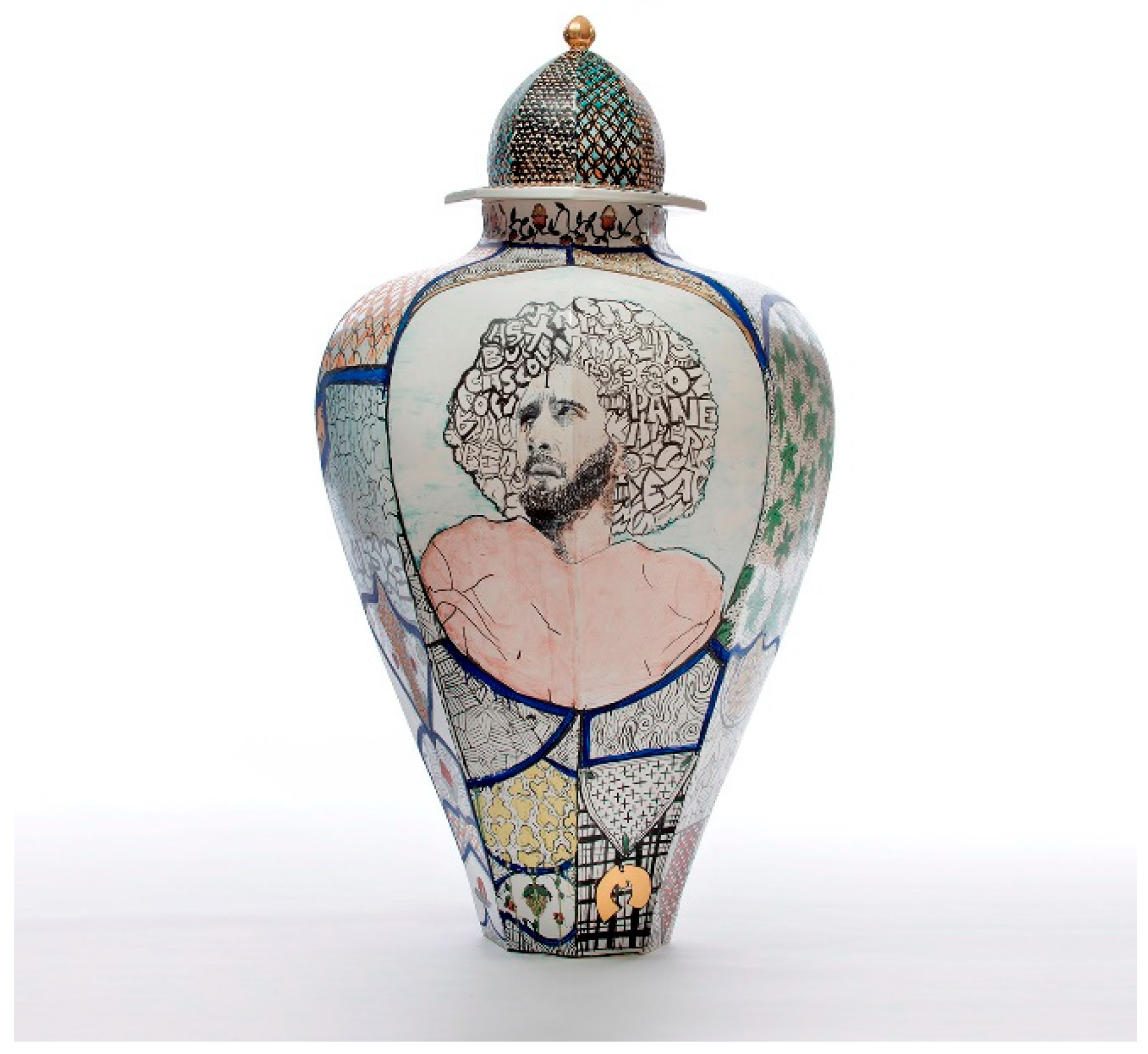
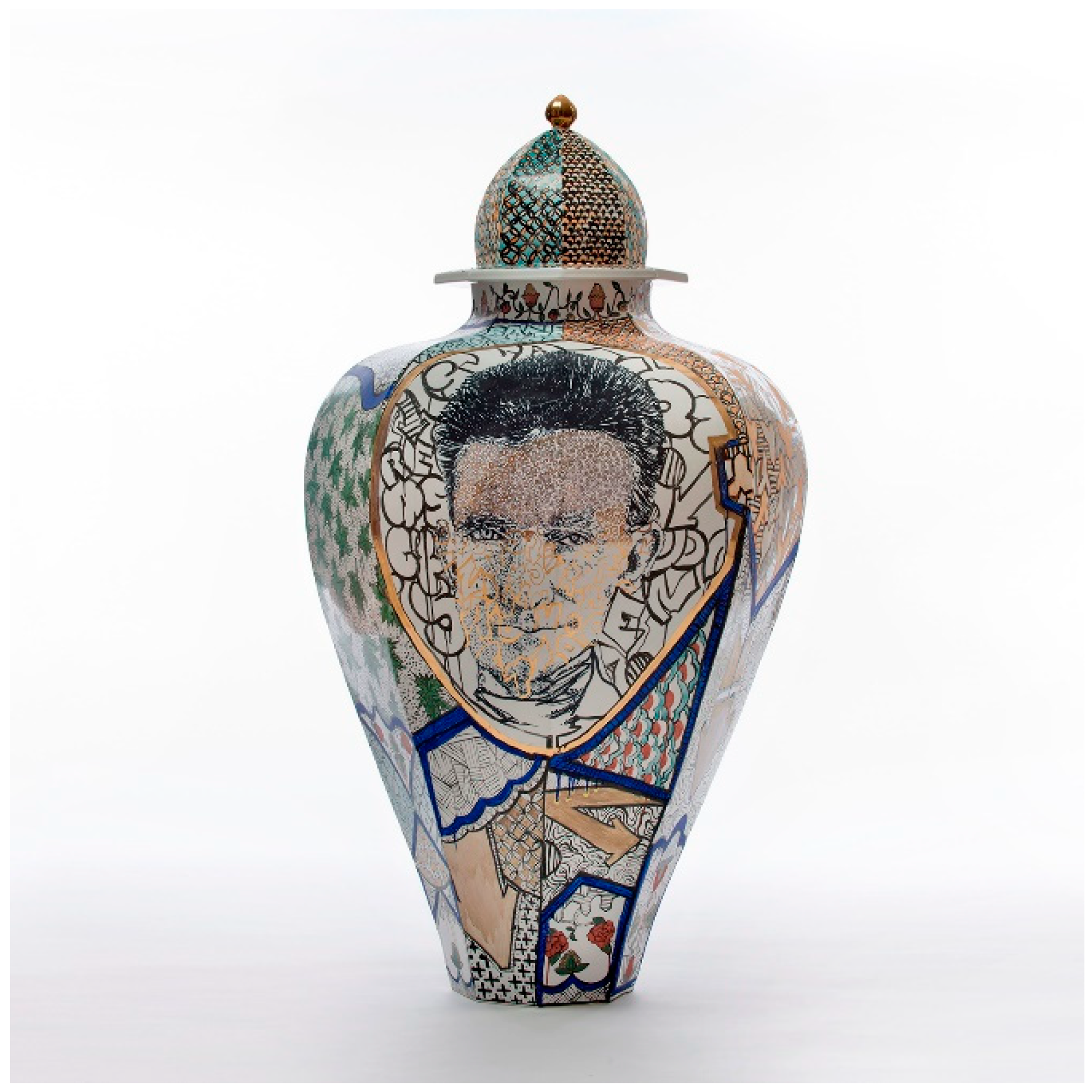
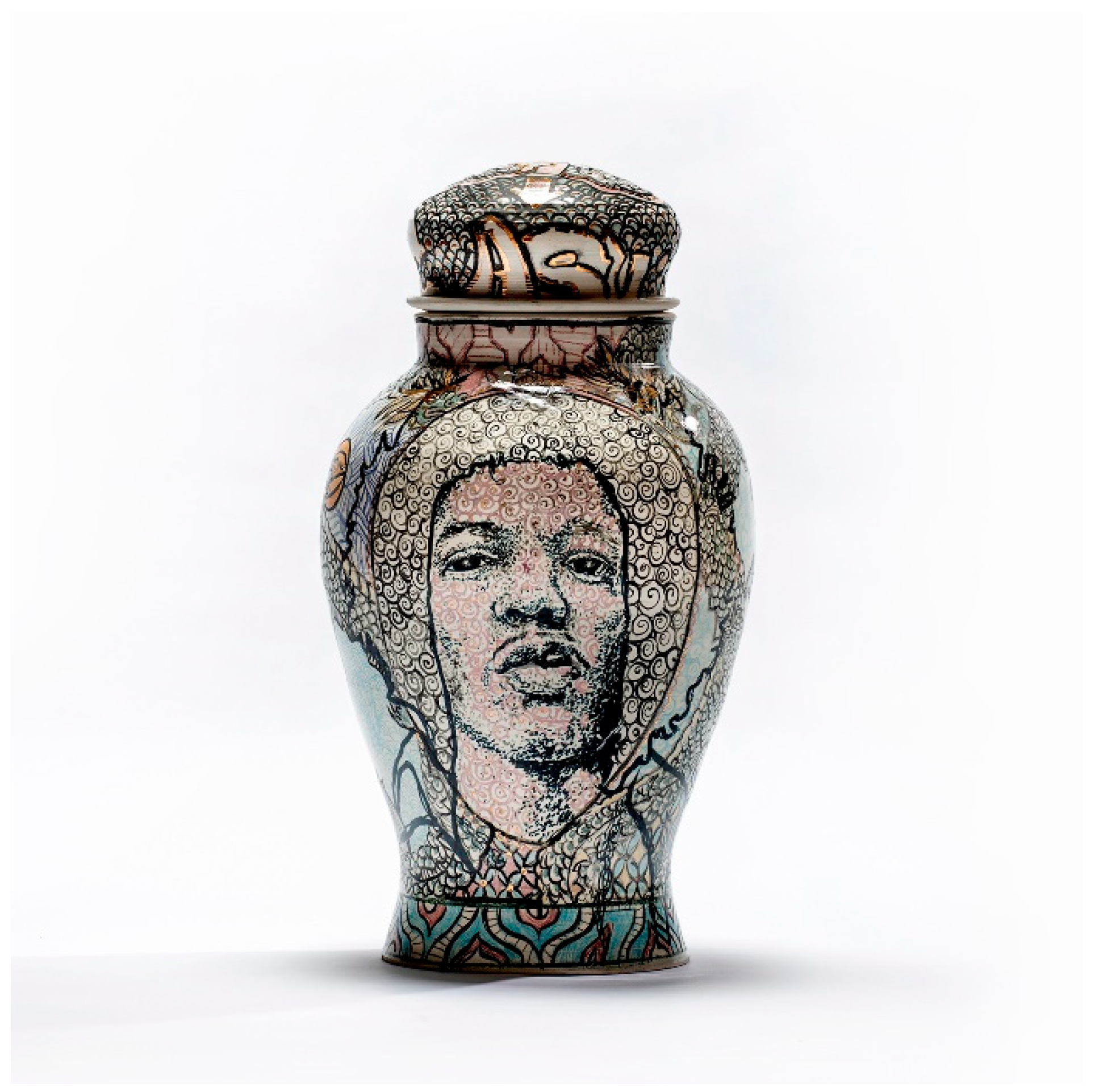
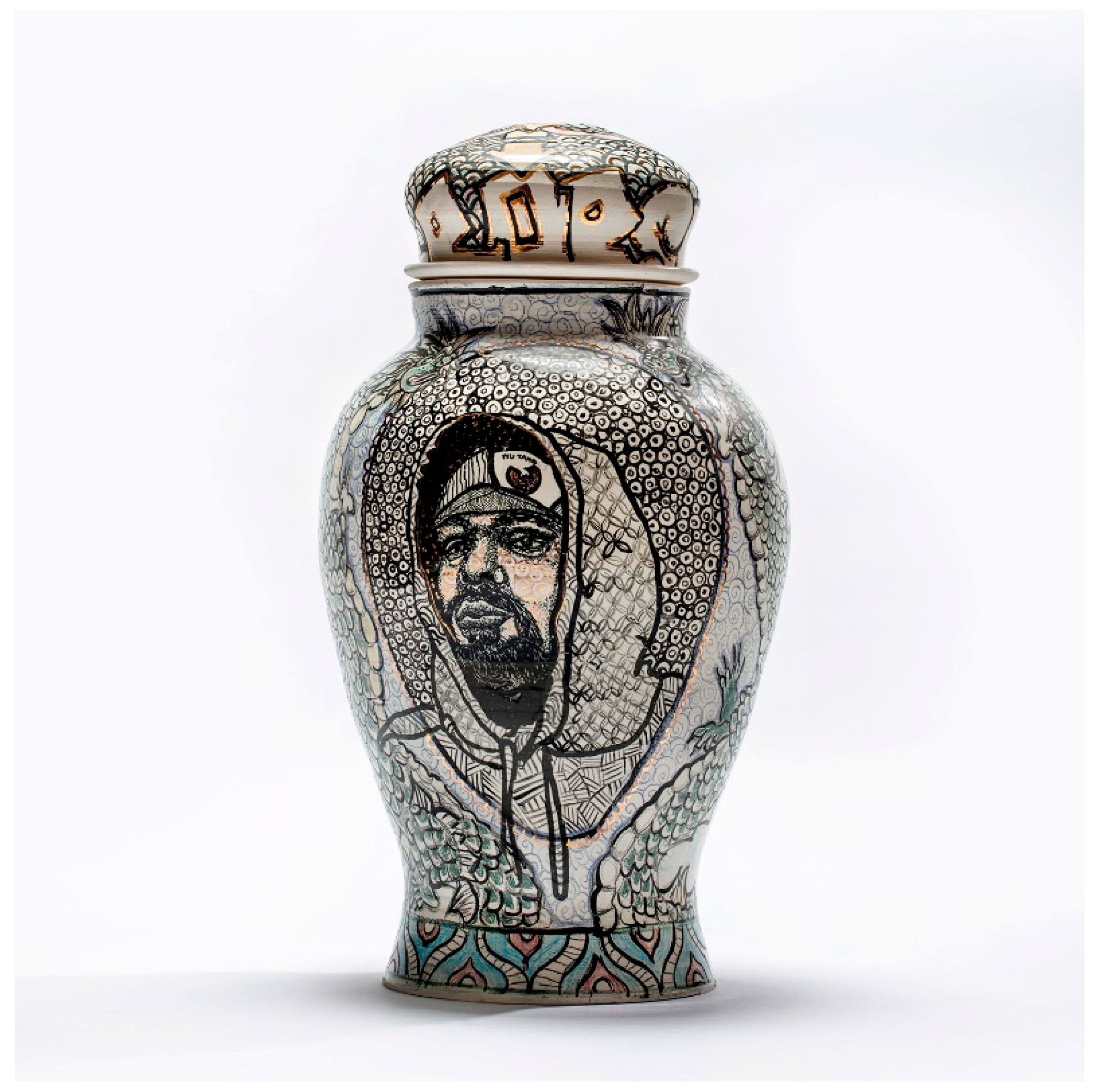
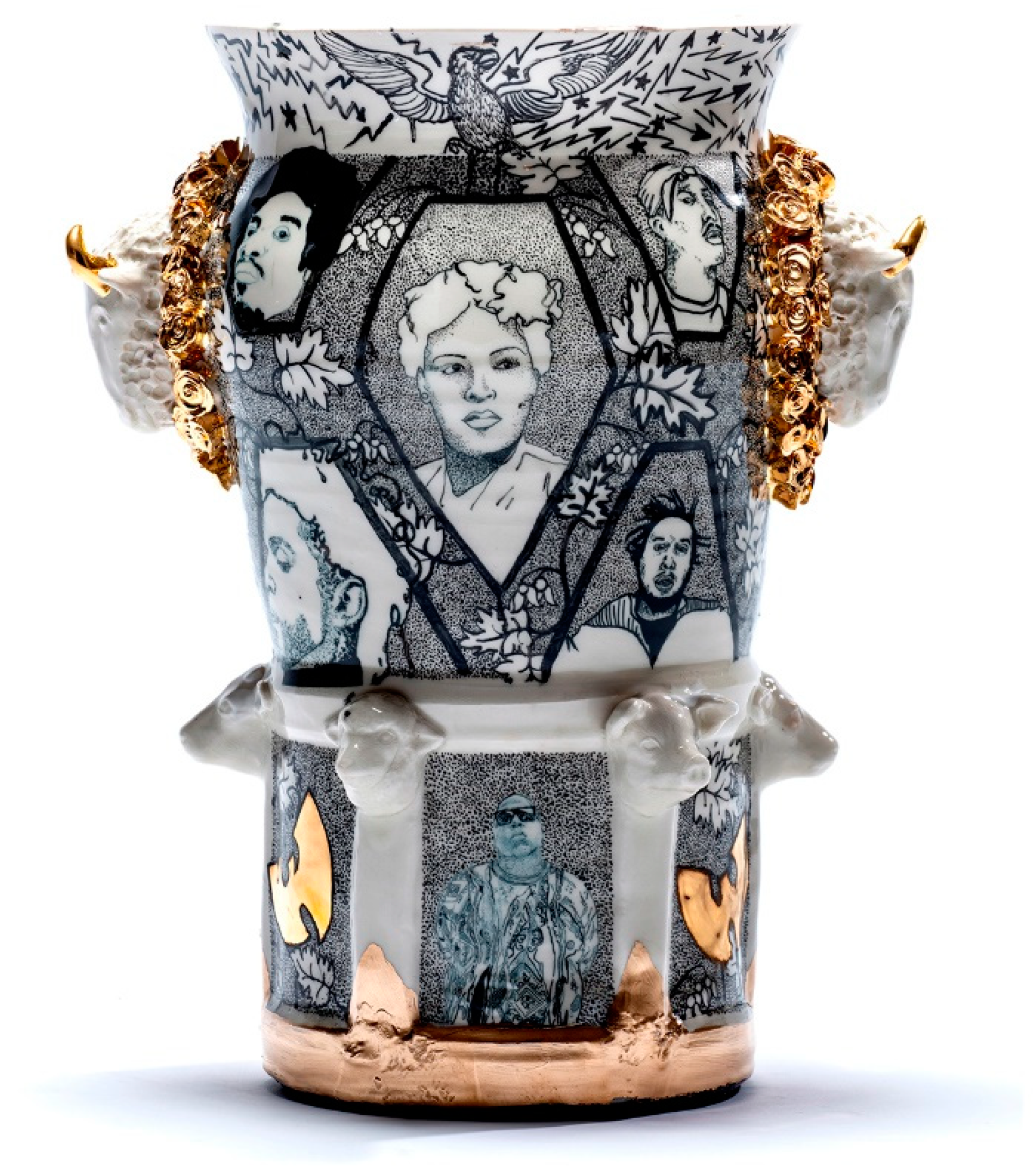
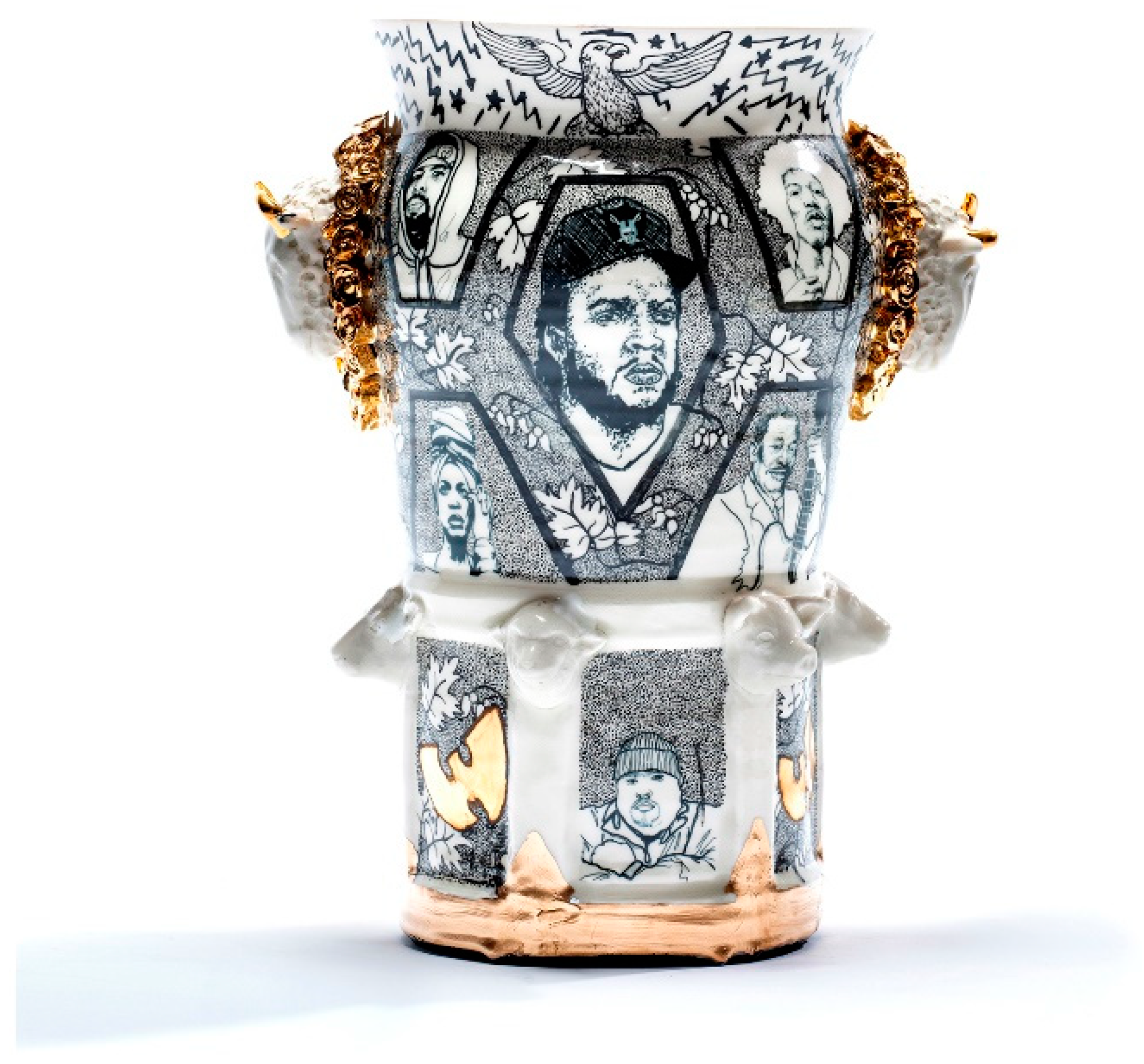
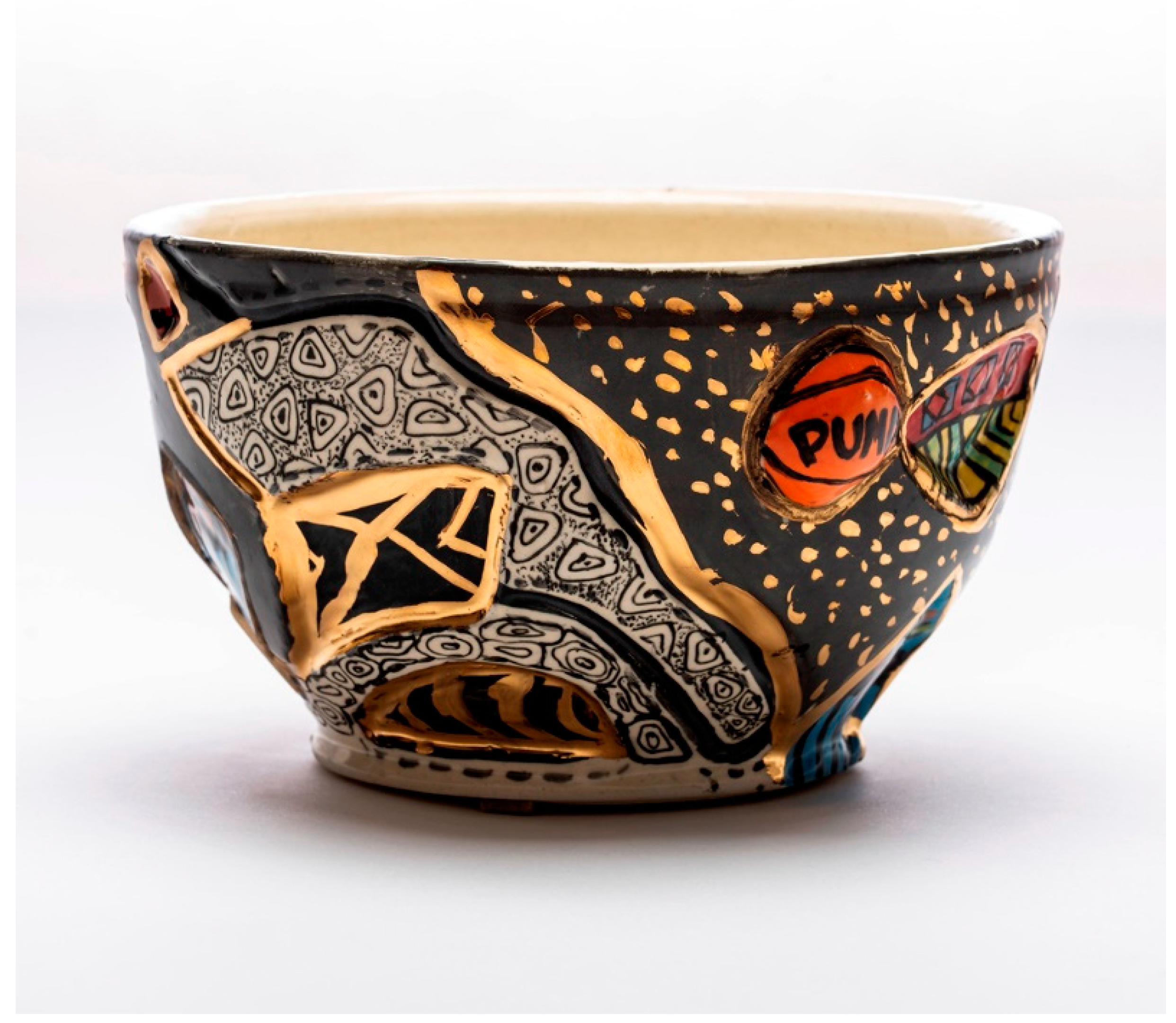
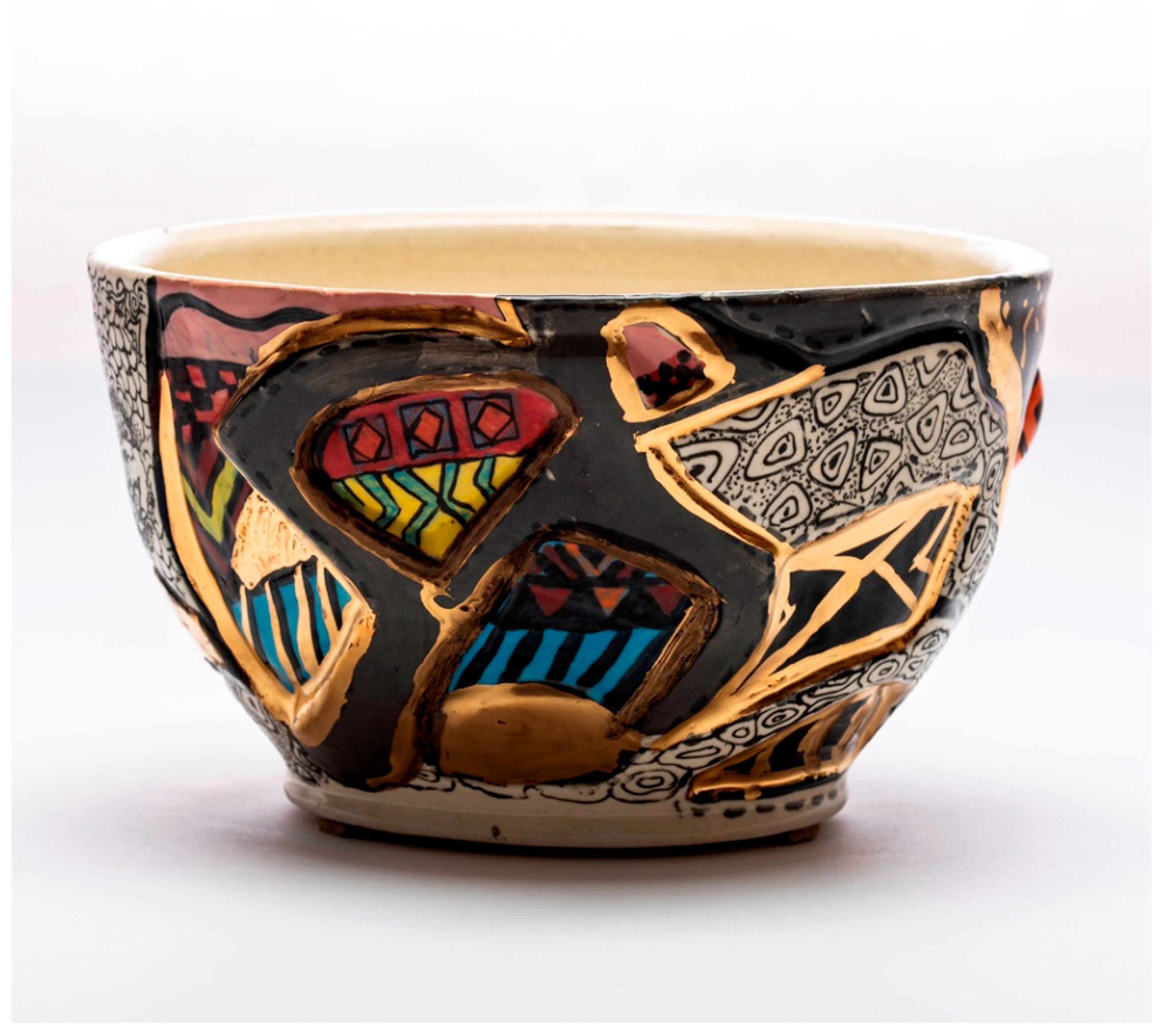
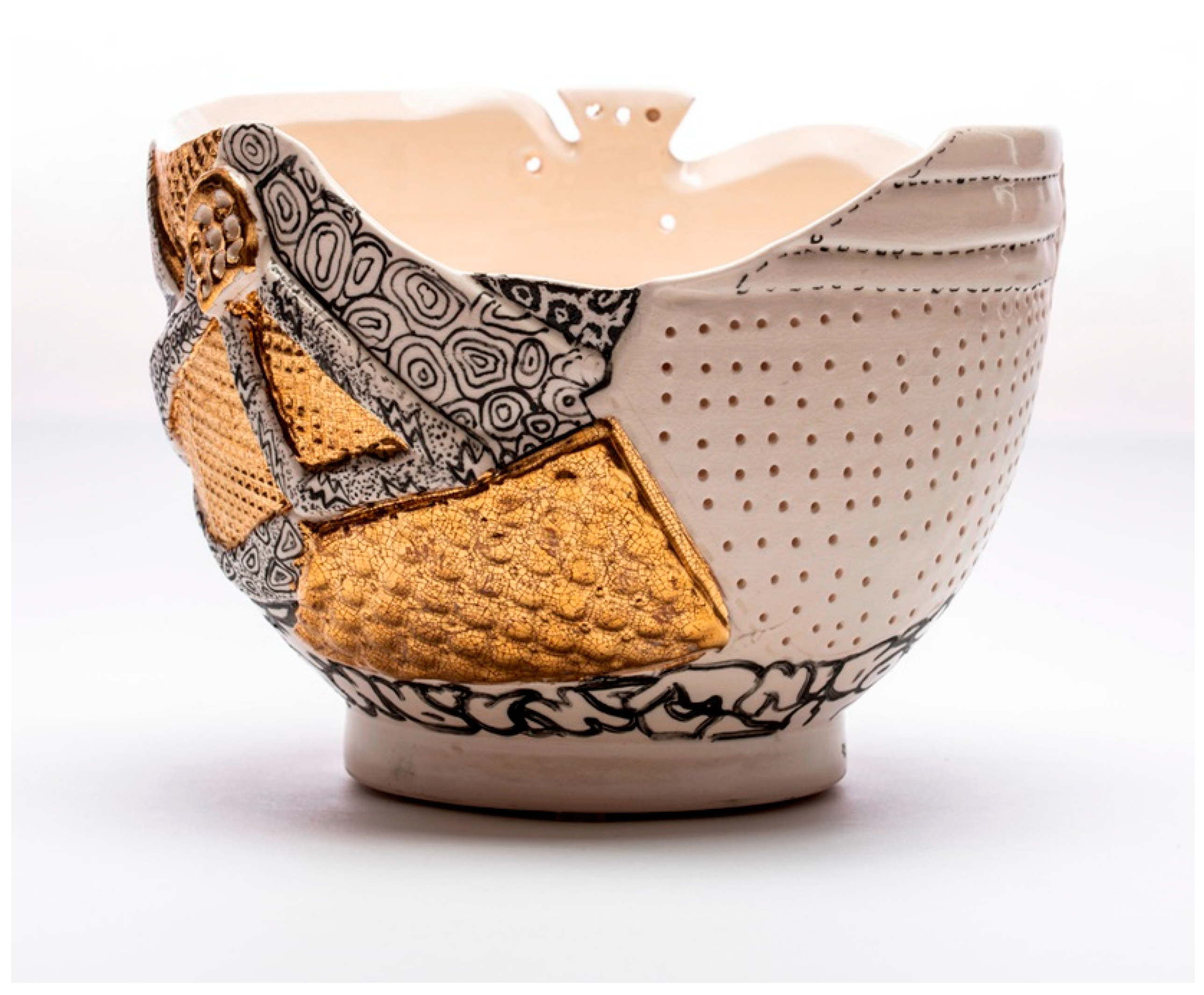
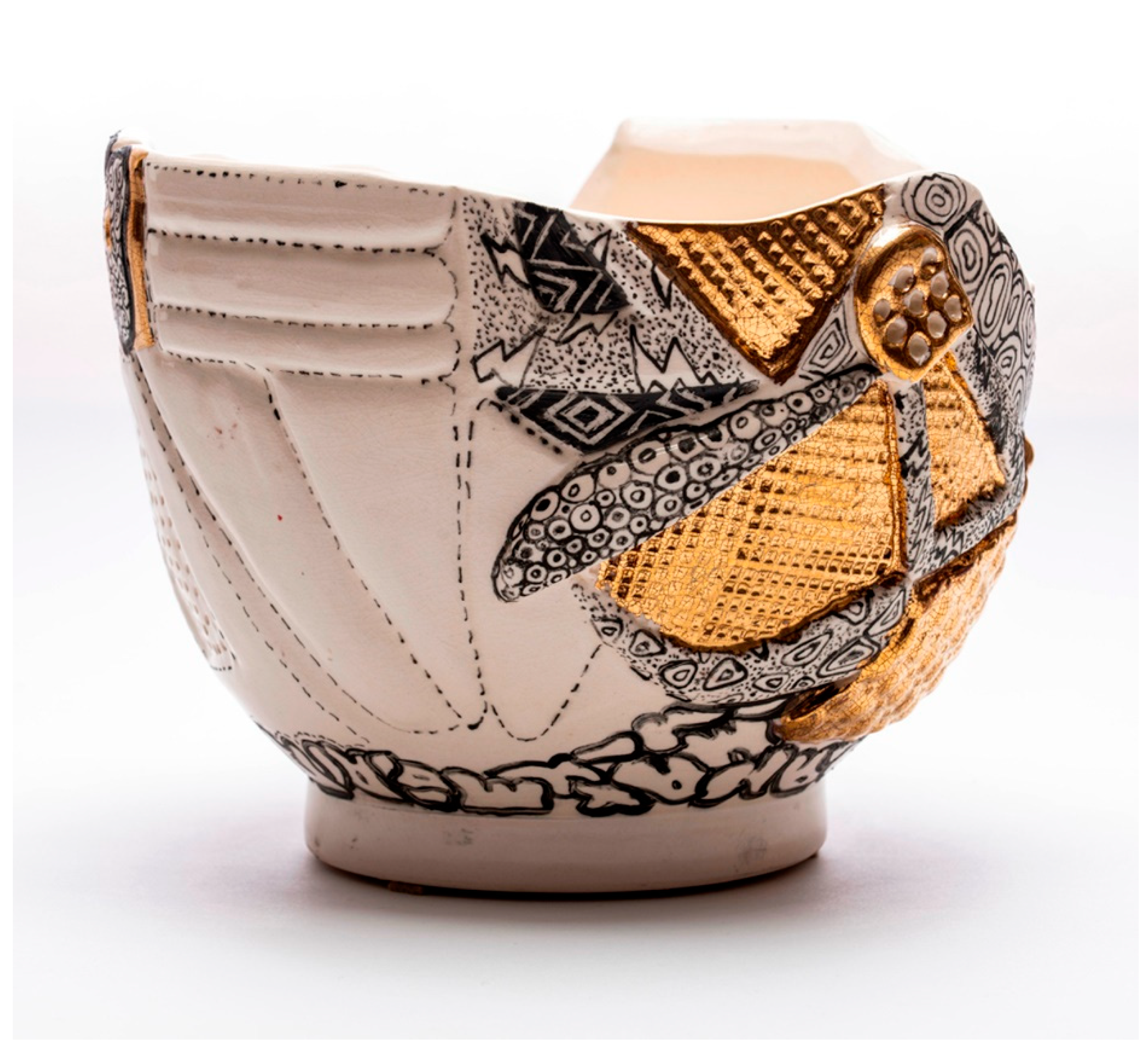
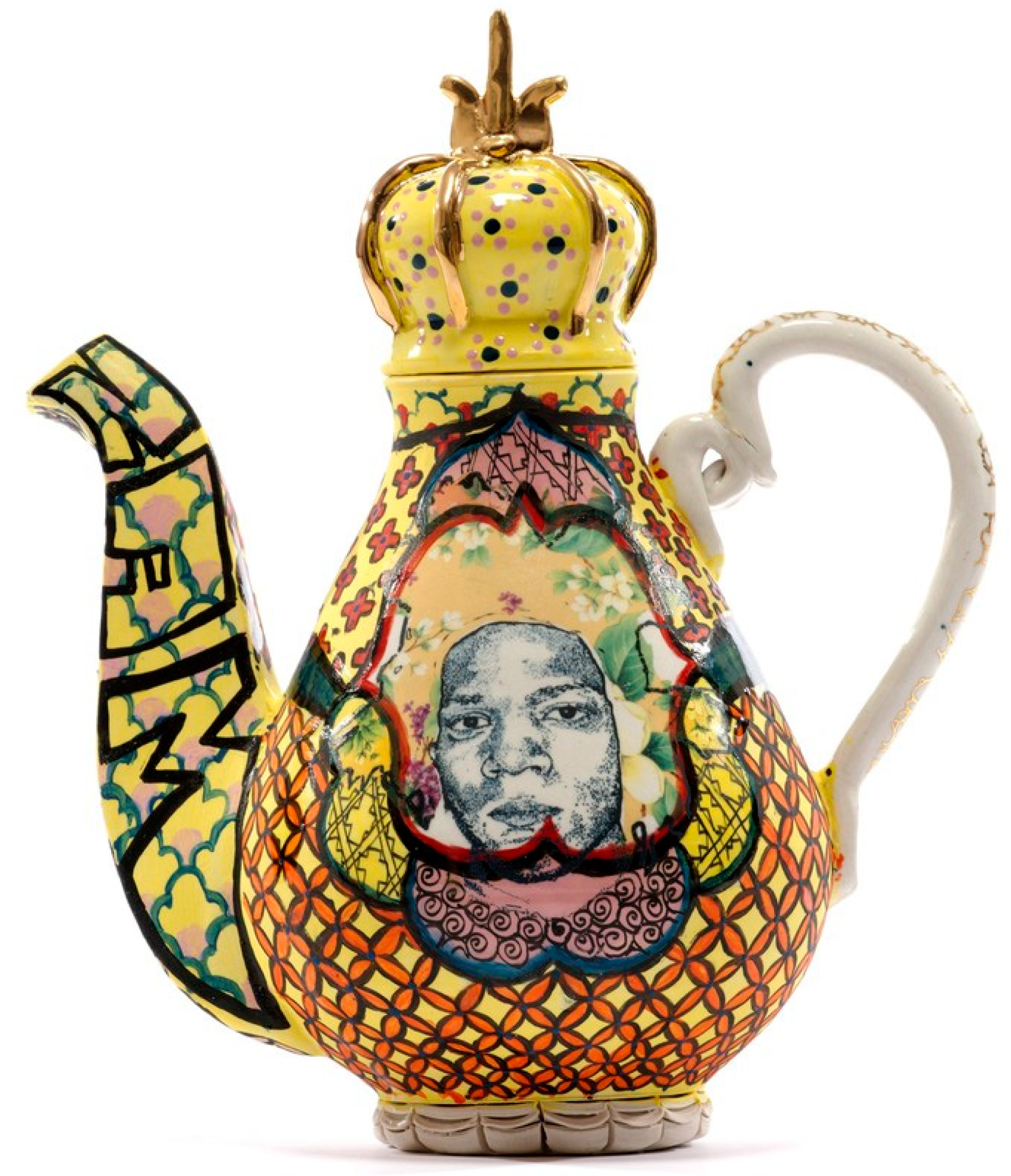
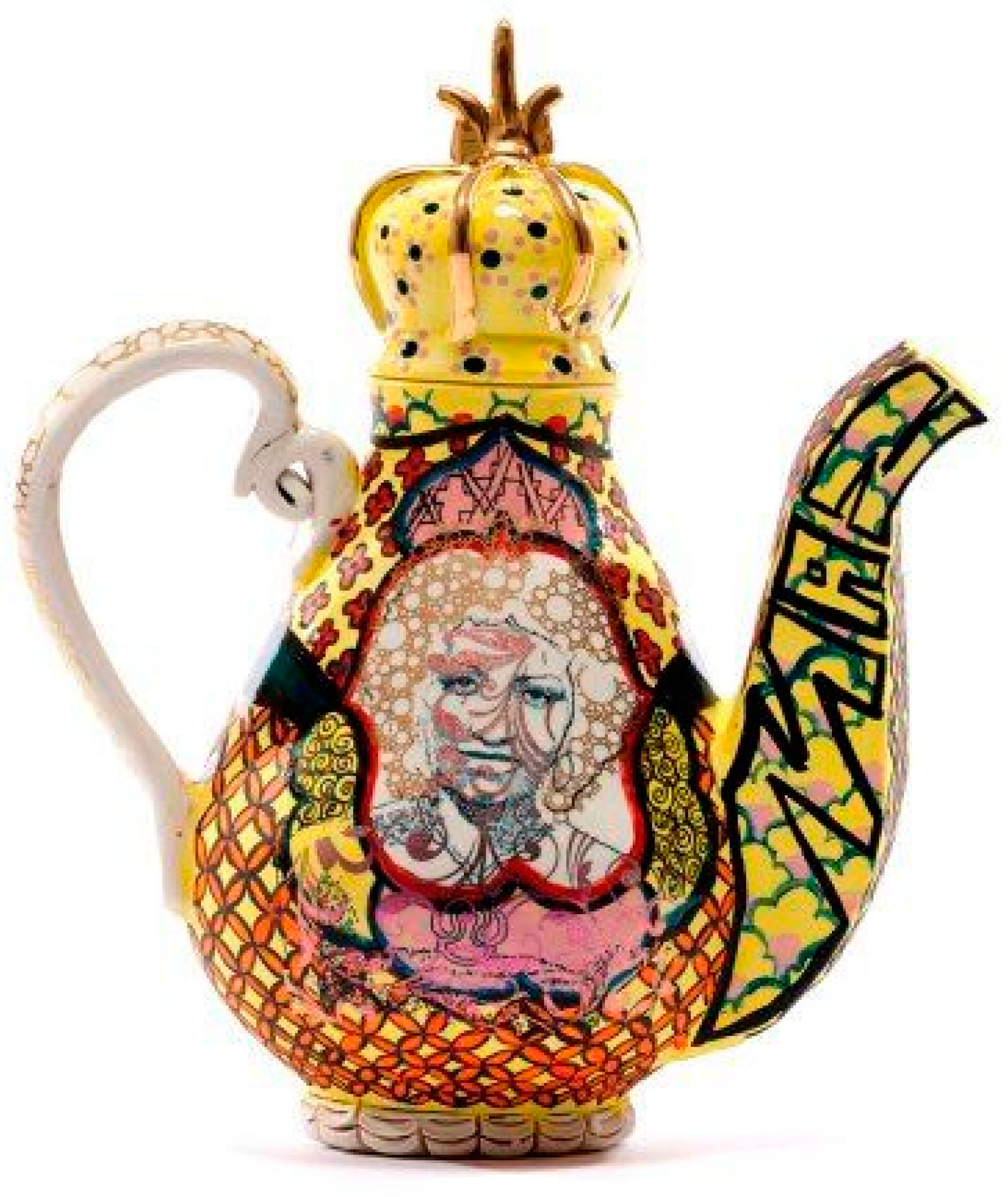
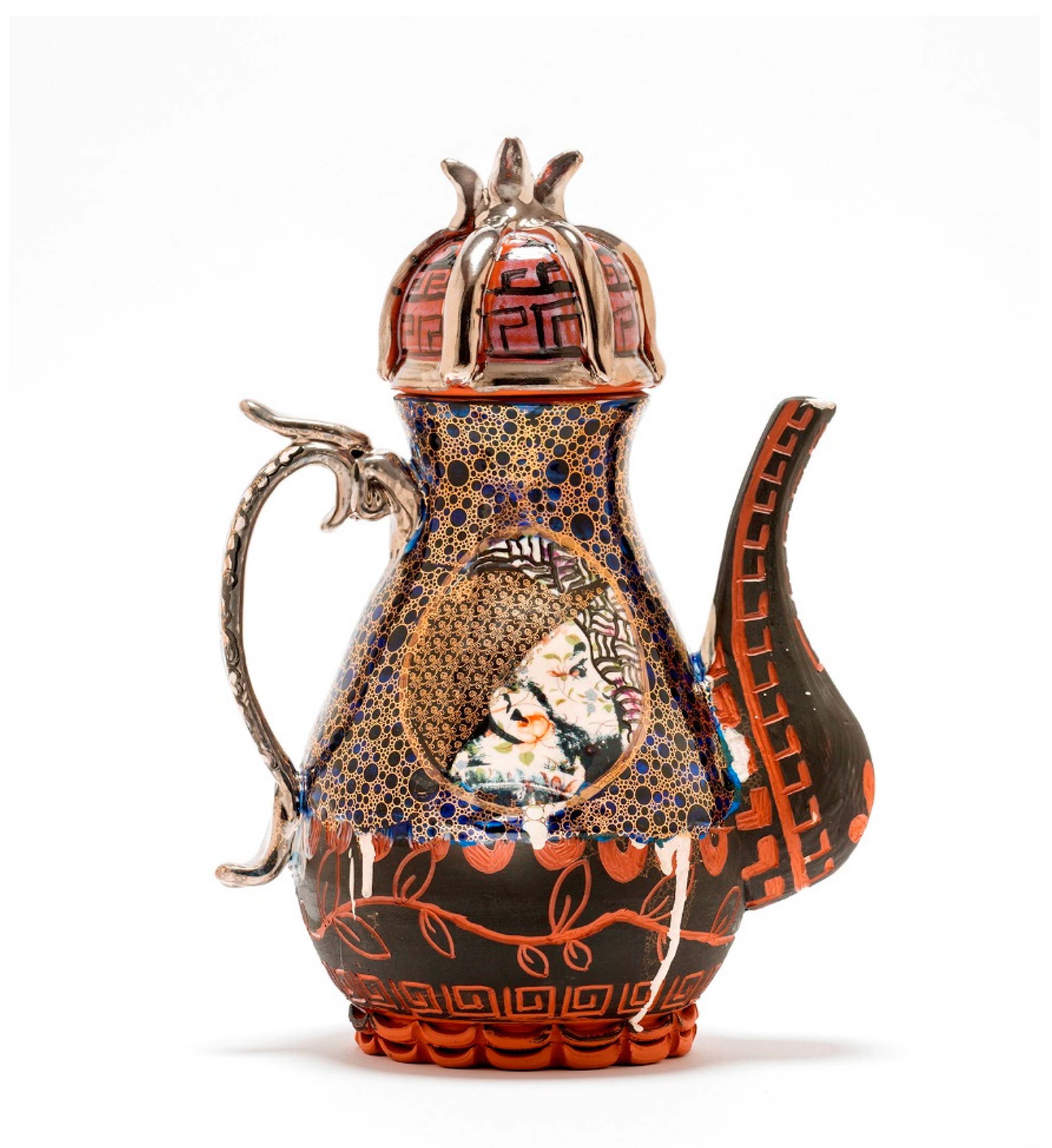
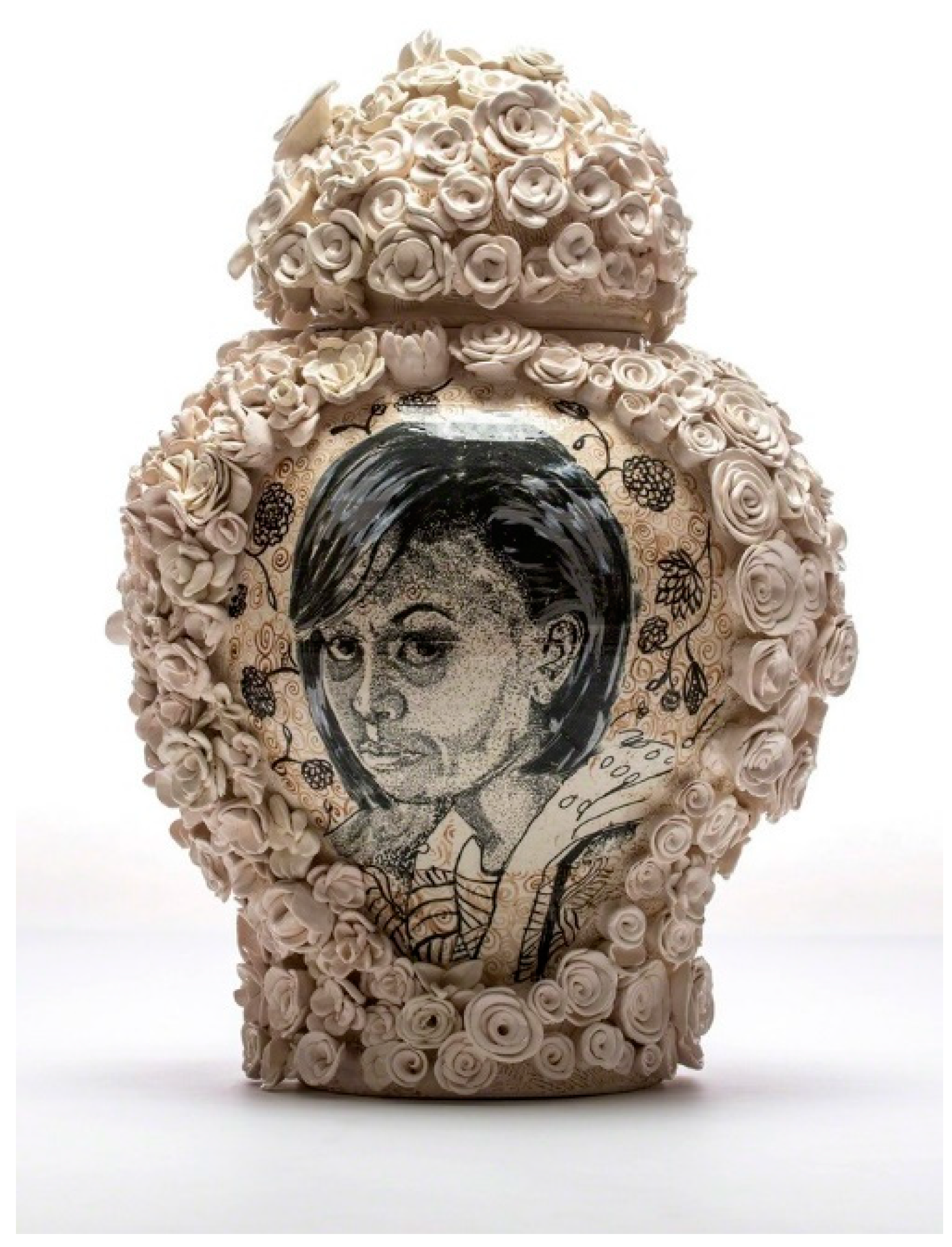
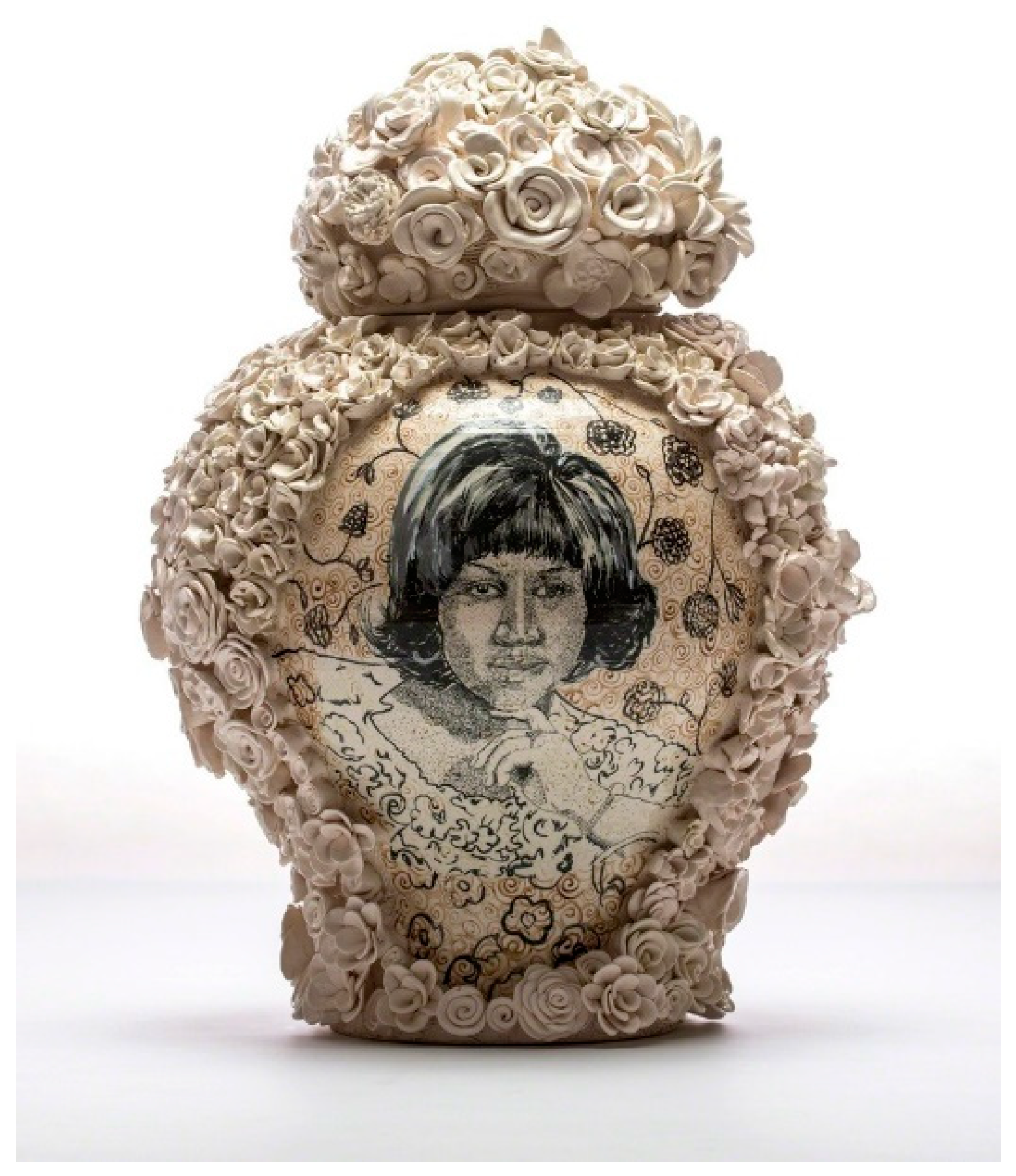
© 2018 by the author. Licensee MDPI, Basel, Switzerland. This article is an open access article distributed under the terms and conditions of the Creative Commons Attribution (CC BY) license (http://creativecommons.org/licenses/by/4.0/).
Share and Cite
Kaplan, H. Roberto Lugo: Critical Discussions of Hip-Hop, Ceramics, and Visual Culture. Arts 2018, 7, 102. https://doi.org/10.3390/arts7040102
Kaplan H. Roberto Lugo: Critical Discussions of Hip-Hop, Ceramics, and Visual Culture. Arts. 2018; 7(4):102. https://doi.org/10.3390/arts7040102
Chicago/Turabian StyleKaplan, Heather. 2018. "Roberto Lugo: Critical Discussions of Hip-Hop, Ceramics, and Visual Culture" Arts 7, no. 4: 102. https://doi.org/10.3390/arts7040102
APA StyleKaplan, H. (2018). Roberto Lugo: Critical Discussions of Hip-Hop, Ceramics, and Visual Culture. Arts, 7(4), 102. https://doi.org/10.3390/arts7040102




